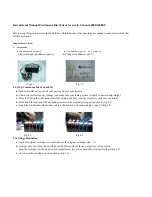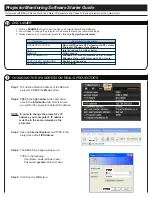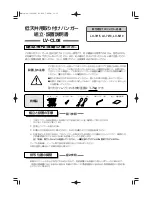
R o o m
c o r r e c t i o n
5 1
Loudspeaker is running in a non-linear range
The effects of a loudspeaker running in a non-linear range is most
easily observed in the impulse response. The tail of the response
has small spikes, as shown in the plot below, where it should be
zero. The larger these spikes are relative to the largest value at the
beginning of the impulse response the smaller the SNR value:
Check the following:
• That the bass protection size has been correctly set – see the
G68 Digital Surround Controller Installation Guide for details.
• That the bass drive unit in your loudspeaker is not rubbing.
• That your amplifier is not clipping.
If problems are still encountered, use the phase/gain tab under
speaker layout to reduce the gain of the channel. Use the reduced
gain setting for the room correction measurements, then return
to the correct level for a calibrated system after running room
correction measurements.
Hum in the system
The effect of hum on the measurement is most easily observed in
the waterfall plot. The continuing signal at 50Hz and 150Hz in the
waterfall plot shown below indicates a mains hum loop:
You are likely to have heard this level of hum when playing
analogue sources connected to the same analogue input card as
the microphone/SPL meter.
In order to get a better measurement disconnect analogue sources
from the analogue input card used for the room correction
measurements. In order to improve your overall system reorganise
wiring to remove the hum loop.
Hum may also be picked up by the lead from the microphone/SPL
meter. It is best to use a shielded cable to reduce the chances of
picking up hum.
Summary of Contents for Configuration Program
Page 1: ...Meridian Configuration Program Guide...
Page 4: ...C o n t e n t s i v...




































